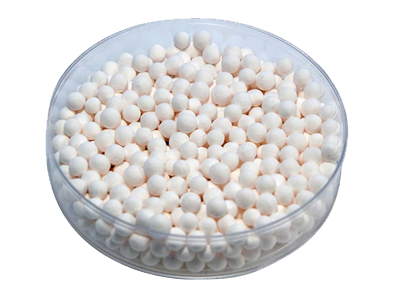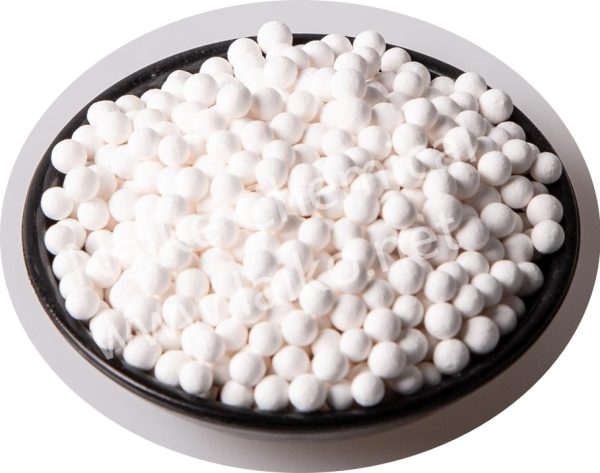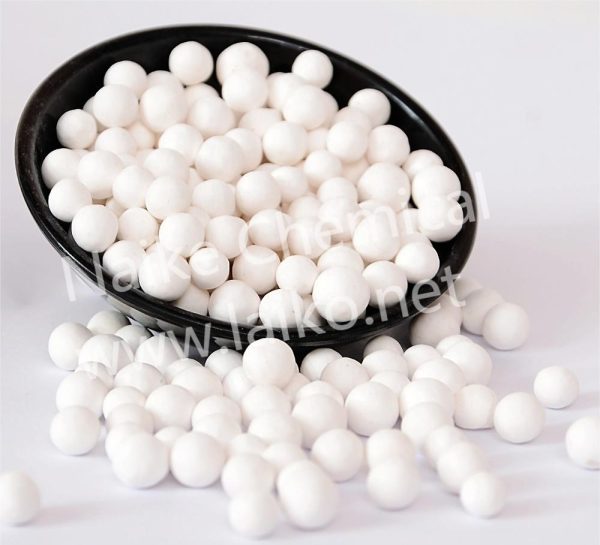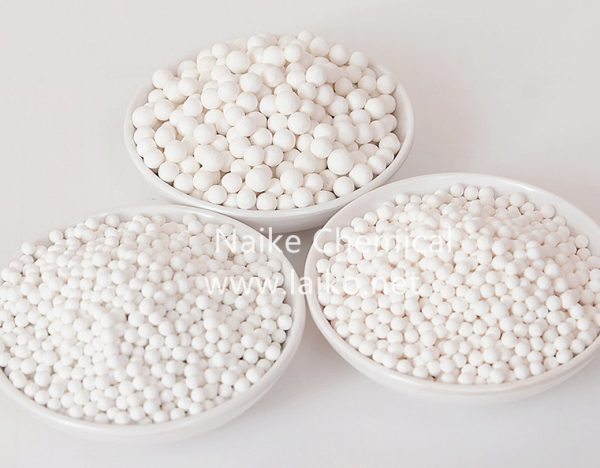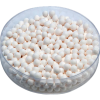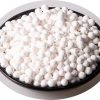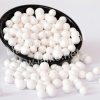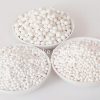Alumine activée
Alumine activée
For the reason of activated alumina’s large capacity of absorption, large surface area, high strength and thermal stability, it has been widely used as an absorber, desiccant and catalyst carrier in chemical, petrochemical and fertilizer industry.
It can also be widely used in the deep drying of cracked gas, ethylene and propylene, hydrogen-generation, air separation, instrument air drying and fluorine treatment for H2O2, also in the absorbing pollution material, such as H2S, SO2, HF and paraffin in the water gas. So it has a high affinity for water/impurity and active catalyst. According to the applications of balls, there are 3 types of Activated Alumina Sorbent, Activated Alumina Desiccant and Activated Alumina Catalyst carrier. Meantime interior composition of the crystal phase was divided into mode Y and X-P. We are a leading manufacturer of high-quality activated alumina products, which are specially designed to meet the diverse needs of various industries.
Description
Taille de l'alumine activée
Activated alumina ball in 1-3mm, 3-5mm, 5-8mm.
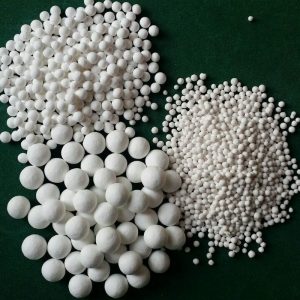
Application de l'alumine activée
Activated alumina is widely utilized in the drying agent of multiform gas and liquid, also function is used as sorbent, desiccant, catalyst support in reactors for petrochemical industry, chemical industry, fertilizer industry and so on.
Spécification de l'alumine activée
| Type | KA401 Absorbant |
KA402 Défluorateur |
KA403 Absorbant pour H2O2 |
KA404 Antichlore |
KA405 Support de catalyseur |
KA406 Absorbant dans la séparation de l'air |
||
| Apparence | Boule blanche | |||||||
| Phase cristalline principale | χ-ρ | χ-ρ | γ | χ-ρ | γ | χ-ρ | ||
| Composition chimique | Al2O3 | ≥93 | ≥93 | ≥92 | ≥90 | ≥93 | ≥90 | |
| Na2O | 1-2.5 | ≤0.3 | ≤0.5 | 0.15-0.3 | ≤0.3 | |||
| I.L | 6-9 | 6-8 | ≤8 | ≤ | ≤5 | 6-8 | ||
| Densité apparente, g/ml | 0.7-0.87 | 0.70-0.75 | 0.65-0.75 | 0.68-0.78 | 0.70-0.80 | 0.68-0.72 | ||
| Surface, m2/g | 270-360 | ≥280 | 200-260 | ≥300 | ≥200 | ≥300 | ||
| Volume des pores, ml/g | 0.3-0.45 | 0.3-0.42 | 0.4-0.46 | 0.3-0.5 | 0.4 | 0.3-0.5 | ||
| Absorption statique, | L'eau 15-17 |
Fluorine
0.12 |
L'eau 50 |
Chlore 10-20 |
L'eau 50-70 |
L'eau 17-19 |
||
| Activité, | – | – | 56-62 | – | – | – | ||
| Perte par abrasion, | ≤0.5 | ≤1.0 | ≤1.0 | ≤0.7 | ≤0.4 | ≤0.8 | ||
| Résistance à l'écrasement, N/grain | Φ1-2 | ≥40 | ≥40 | – | ≥40 | – | – | |
| Φ2-3 | ≥60 | ≥60 | – | – | – | – | ||
| Φ3-5 | ≥100 | – | ≥100 | ≥82 | ≥100 | ≥100 | ||
| Φ4-6 | ≥120 | – | ≥130 | ≥120 | ≥120 | ≥110 | ||
KA401 : sert d'adsorbant
KA402 : pour la défluorisation
KA403 : pour l'absorption dans la production de peroxyde d'hydrogène (H2O2)
KA404 : pour le support de catalyseur
KA405 : pour la déshydratation et le séchage dans la séparation de l'air, etc.

